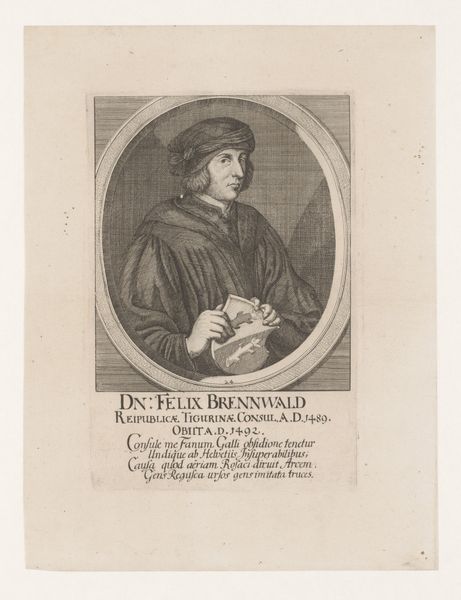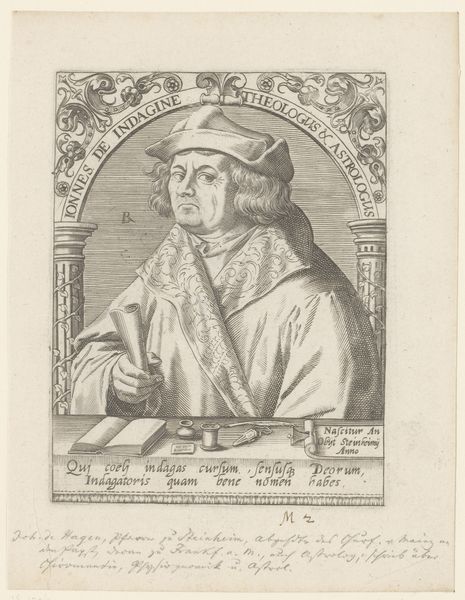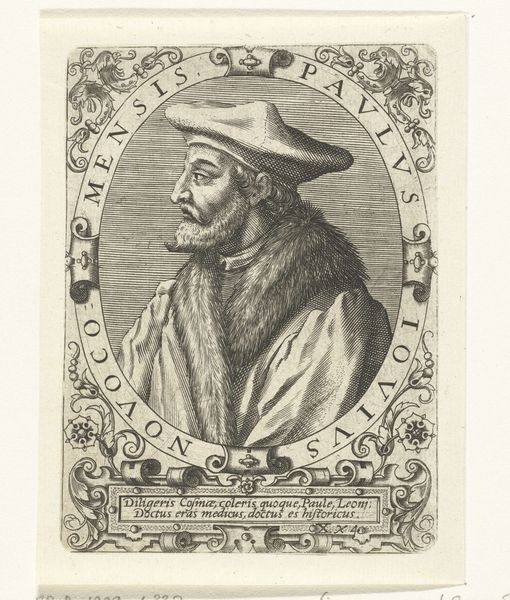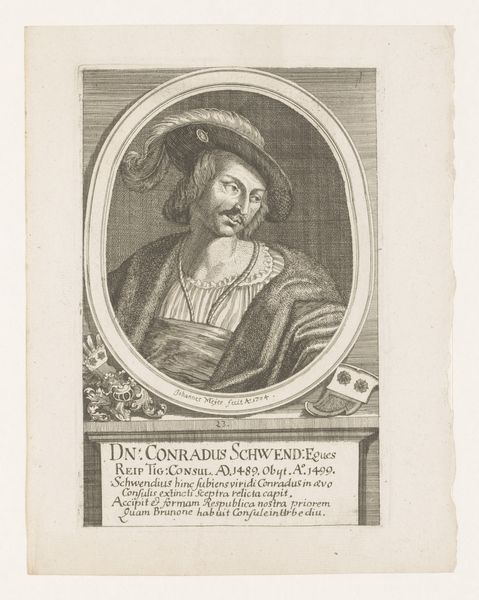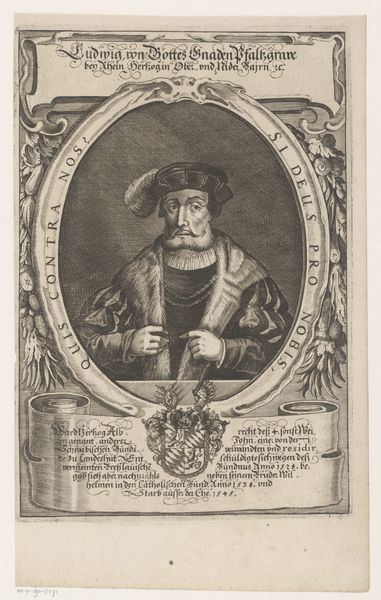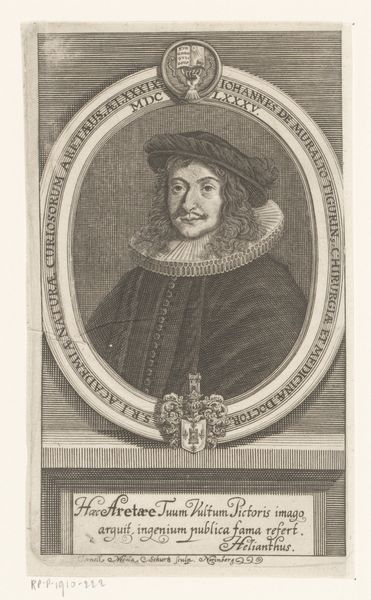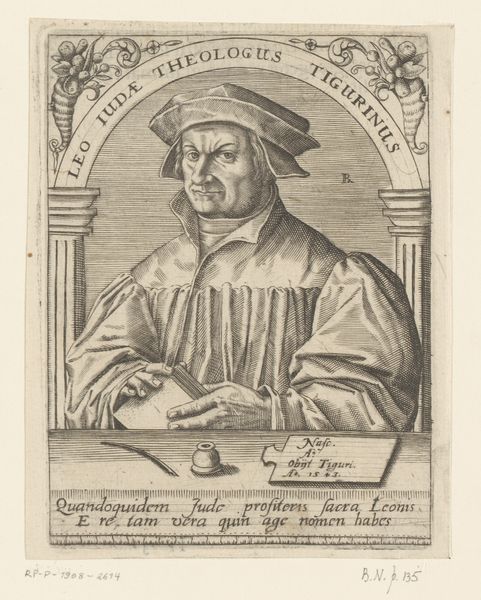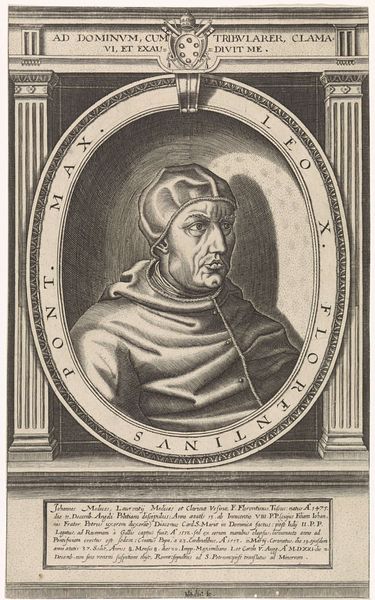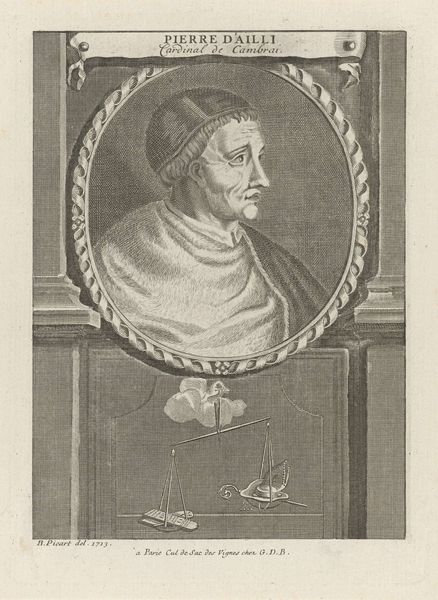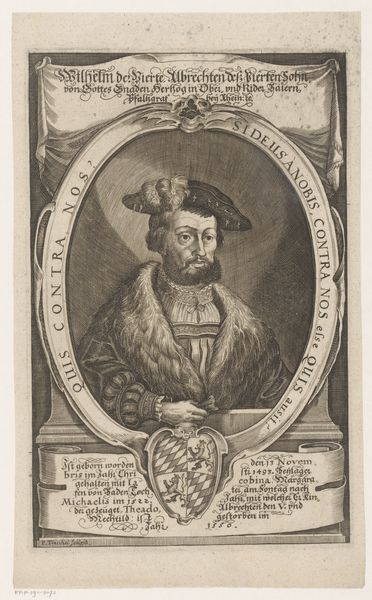
print, engraving
#
portrait
#
baroque
# print
#
old engraving style
#
history-painting
#
academic-art
#
engraving
Dimensions: height 240 mm, width 161 mm
Copyright: Rijks Museum: Open Domain
Curator: Look at the crisp lines and tonal range in this print, entitled "Portret van Johannes Schwend," attributed to Johannes (II) Meyer. The piece is thought to have been created sometime between 1665 and 1712, during the late Baroque period. What's your initial read of it? Editor: An air of civic duty and sober contemplation emanates from this gentleman. There is an appealing seriousness in his raised hand. What about the rest intrigues you? Curator: I'm struck by the careful integration of symbols of identity and power: his family crest prominent and his apparel pointing to his role, the historical turbans recalling ancient allegiances and social roles, marking cultural identity and continuity. The whole construction works to evoke themes of governance, of legacy. What story of imagery do you think is the picture relating? Editor: I note that this imagery would have been deliberately presented to flatter the sitter and present him as a man of substance at a moment when civic leaders played key roles. He literally holds the symbols of his family while holding out his hand, a presentation of power made at an epoch when printmaking gained importance. It highlights how the public roles are crafted for an increasingly literate populace. Curator: The choice of engraving, a meticulous process of etching lines into metal, mirrors the careful crafting of Schwend’s image. There is something in the symbolic layering that transcends portraiture to offer historical resonance that continues to impact our culture, something more abstract about representation. Editor: Perhaps it's the academic art style, the traditional portrait conventions employed, that lends this print its enduring impact. The man and the context fuse into an item crafted for a wider society. This historical document can, still, make people reflect on a fascinating bygone era and also on print and portrait's power. Curator: I see it a bit differently. In the imagery itself I see more layers of how memory is encoded into this single work, still with meaning today. Thank you for expanding on this important perspective of public function! Editor: And thanks to you. It enriches our reading.
Comments
No comments
Be the first to comment and join the conversation on the ultimate creative platform.

